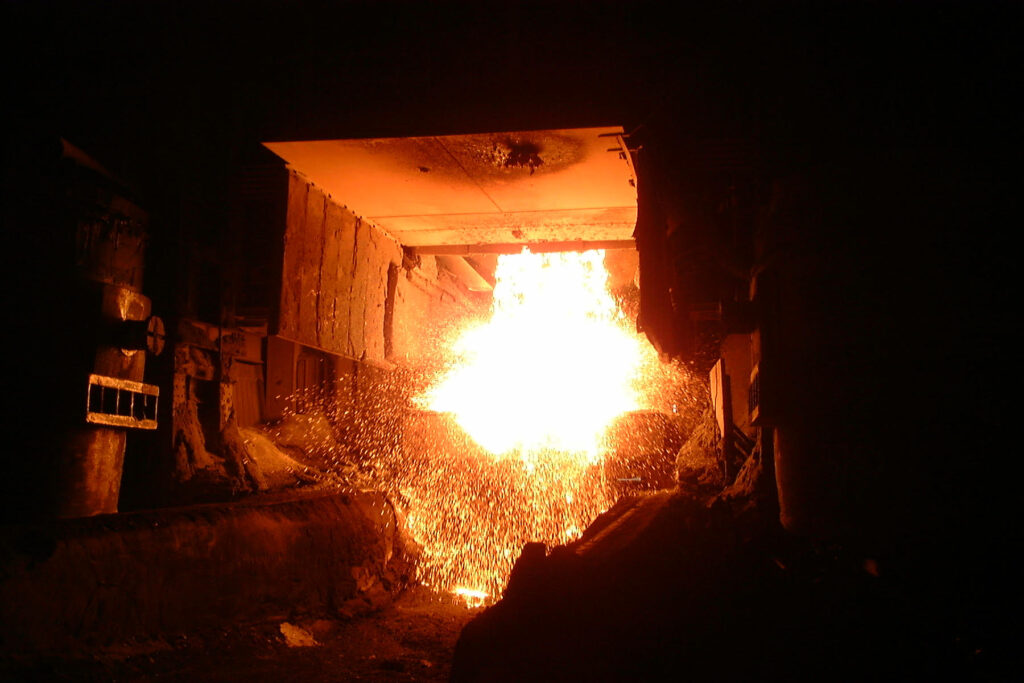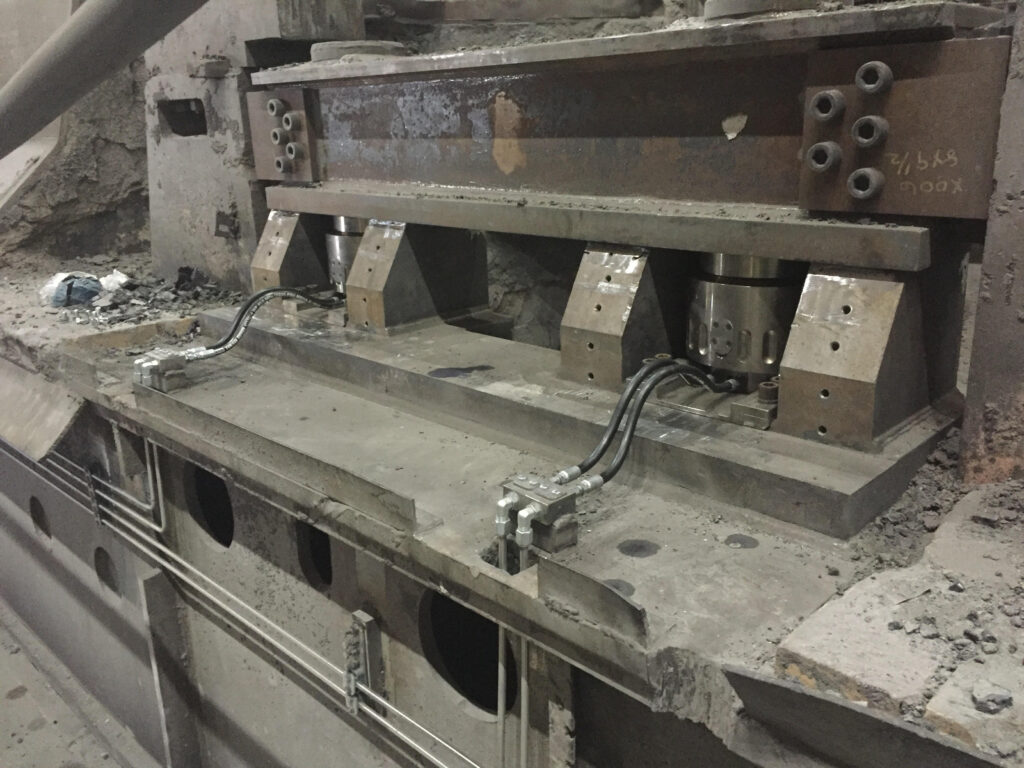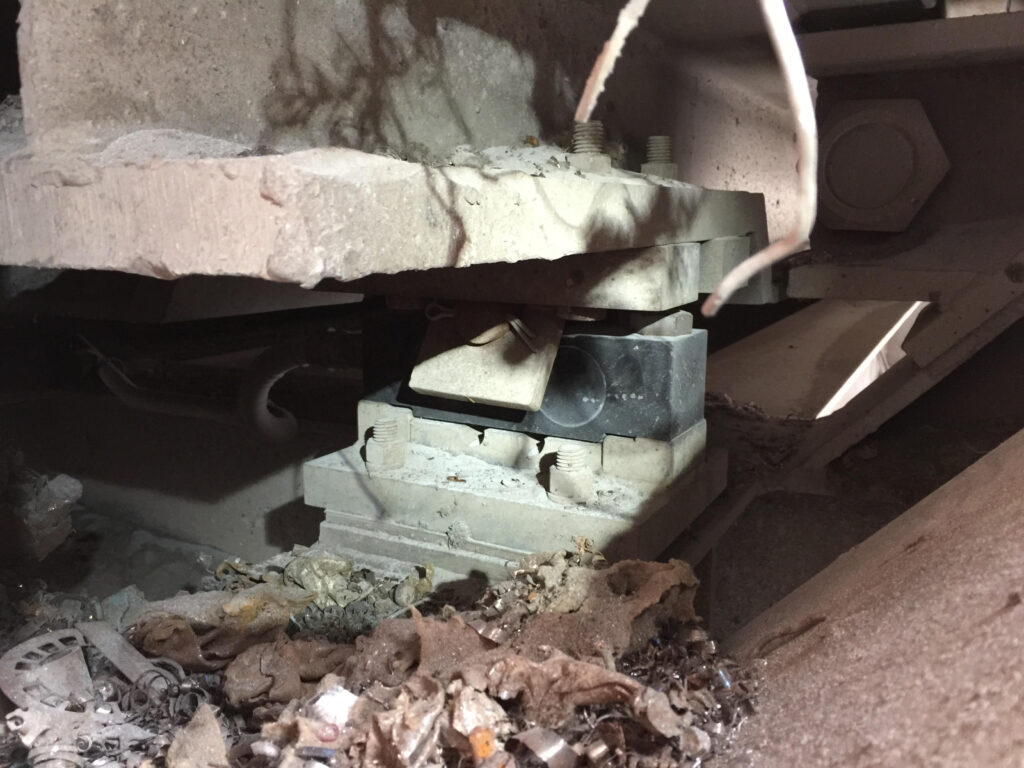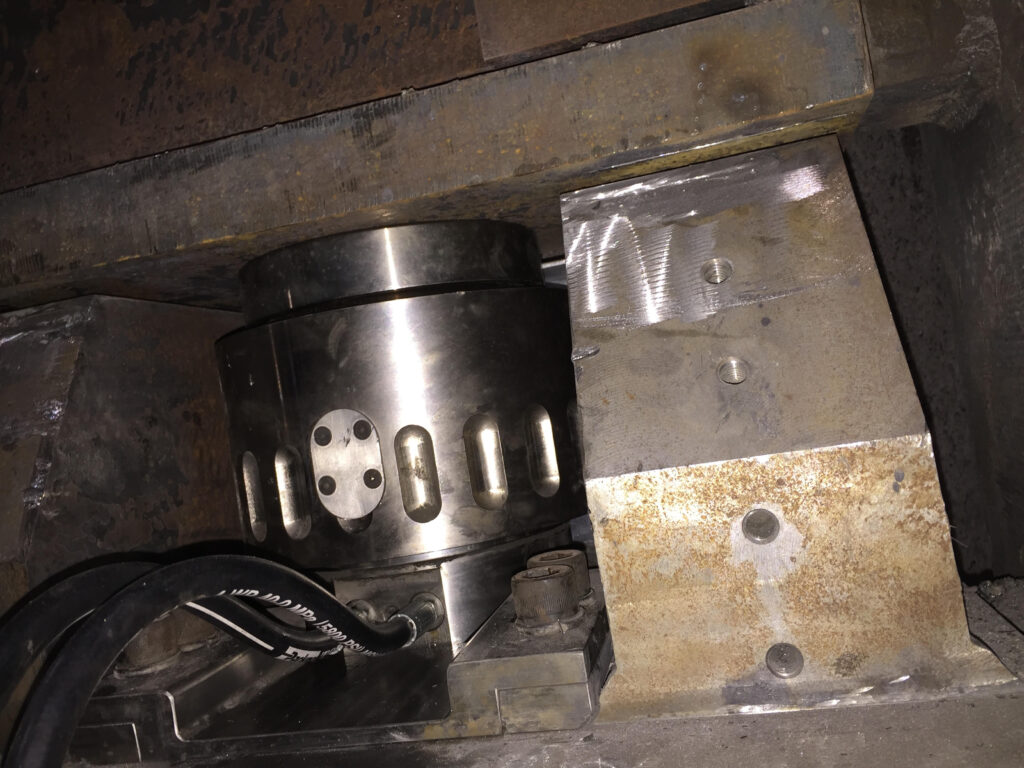
Hydraulic weighing solution for the heaviest loads
Accurately measuring millions of pounds in harsh industrial environments.
August 2, 2023 | By Lucas Demysh
 Photo: ©️2023 Lucas Demysh. All rights reserved.
Photo: ©️2023 Lucas Demysh. All rights reserved. 
Photo: ©️2023 Lucas Demysh. All rights reserved.
Conventional weighing systems used in harsh, heavy industrial applications, such as petrochemical tank measurement and steelmaking processes, have some critical deficiencies.
First, the systems rely on load cells, a type of mechanical force transducer exposed to the rigors of daily operations. As a result, conventional load cells must be overdesigned to meet the anticipated shock loads, sacrificing resolution and accuracy.
Second, conventional load cells require micro-volt sensitive electrical wiring and connections rated for extreme heat, grease, oil, and fluids. To meet safety requirements and maintain reliability, this requires frequent recalibration and unscheduled repairs that disrupt production.
Another significant deficiency with conventional load cells is inaccurate readings. The commissioning calibration of a conventional weighing system processor requires multi-point calibration to formulate a best-fit polynomial that describes the physical characteristics of the multiple load cells working in unison.
If a load cell is stressed beyond its yield point, residual stresses remain, and the original polynomial no longer reflects the new physical characteristics. Unfortunately, multi-point recalibrations are rarely performed in the field, so this frequent error is seldom discovered. In conclusion, all values are incorrect except for the zero and the single point derived from the test weight.
After commissioning, the common procedure for recalibrating the weighing system is to adjust the zero and span to match a known test weight (two-point calibration). The assumption is that the polynomial describing the physical characteristics of the combined load cell system remains unchanged.
Conventional load cells, by design, are limited to single-axis measurements. Side loads are deadly. The readings cannot be trusted when one or more conventional load cells get overloaded due to dynamic shock loads. Diagnosis is impossible until a system recalibration with a test load is performed.

Photo: ©️2023 Lucas Demysh. All rights reserved.
Finally, the weighbridge of a conventional load cell system must always be free and clear of debris. Unfortunately, the weighing syste
m is often inaccurately recalibrated because it is stuck, which can continue undetected for weeks or months due to production schedules.
An unconventional solution
The hydraulic weighing system is completely different from conventional weighing systems because the hydraulic load cells are dynamic, which means they can be stowed for protection against shock loads and deployed as required. The hydraulic pressure is coupled to a custom high-precision digital pressure transducer located in a safe environment away from the production area via small diameter (1/4”) hydraulic tubing and flexible hoses wherever movable joints are desired.
Each measurement transducer has a minimum accuracy of 0.010 per cent = approx. ±32 pounds, a precision of 0.0015 per cent = approx. ± five lbs, based on a max load of 317,816 lbs per transducer. The typical hydraulic weighing system configuration uses four independent transducers, providing a combined system accuracy of approx. ±64 lbs, and a precision of approx. ±10 lbs, based on a maximum evenly distributed load of 1,271,200 lbs per system.
Another important benefit of the hydraulic weighing system is its dynamic operation. Its ability to be deployed and stowed helps keep the weighing system free from binding or getting stuck.
In addition, the system can be remotely cycled (exercised) at any time, especially during normal production, making the hydraulic weighing system inherently self-correcting, preventing binding, and keeping it highly functional and dependable.

Photo: ©️2023 Lucas Demysh. All rights reserved.
Key benefits
- Simplicity – pressure multiplied by the piston area equals the load (complex polynomial not required).
- Never drifts out of calibration, ensuring reliability.
- Pressure transducer redundancy. Multiple pressure transducers can be installed on a single circuit to provide independent cross-checks, ensuring the true pressure is continuously measured. This presents a warning to investigate if all the same-circuit transducers are not reading the same values.
- The hydraulic load cell can be designed so the side-load capacity is almost the same as the vertical load capacity. This is impossible with a conventional load cell.
- Almost impervious to overload conditions (over-pressure is relief-valve protected).
- Available new environmentally-safe fire-resistant-approved hydraulic fluids that can be cooled and cycled through the cell for high-heat applications.
- Higher resolution than conventional load cells (overdesign not required).
- Special materials and exotic surface treatments are applied to minimize internal friction.
The steel mill perspective
Metallurgical Sensors Inc. (Metsen) conducted research that found primary and secondary steel mills are having overwhelmingly negative experiences in their steelmaking processes from using conventional electro-mechanical (strain-gauge) type load cells, which are inadequate weight measurement systems.
Many steel mill visited had a derelict or abandoned weighing system intended to weigh the contents of the metallurgical vessel. Instead, the operators resorted to “estimating” weights based on freeboard for liquid metal or slag and size and shape for shredded scrap steel or slabs and billets.

Photo: ©️2023 Lucas Demysh. All rights reserved.
Conventional-type load cells are inadequate for weighing metallurgical vessels because
Component survivability in steelmaking production
Electrical wiring and circuitry get burned up due to exposure to the hot metal and slag close to the load cells of the metallurgical vessel.
Maintaining uninterrupted data connection with mobile platforms
Metallurgical vessels are carried on moving frames, that require complicated, costly and difficult-to-maintain electrical slip-rings or cable reels.
Imperviousness to all noise interferences.
The strain gauge signals are in the microvolt range, transmitted over long cable distances to the electrical bridge. This configuration is prone to electrical noise interference and inconsistent wire junctions.
Shock-load and side-load survivability
The load cells are designed to support the load in a single axis and become easily damaged by side-loads. When moving a live load, such as a ladle filled with liquid steel on a moving platform, hundreds of tons of side-load shock forces are impossible to overcome without some type of complex dynamic caging system. Such a caging system would limit measurements to static (non-sloshing) conditions.
Maintaining accuracy
The load cells function by measuring the internal strain of their load-supporting structure, so they are limited to exposure to loads that are safely below their yield point. Spurious shock loads above the yield point will damage them. Often a load cell will unknowingly continue to provide incorrect weight measurements, requiring considerable luck to be discovered without frequent calibration checks.
Optimizing resolution for process requirements
High resolution is required; therefore, using load cells with high enough capacities to endure shock or side loading is not feasible.
Optimized mean time between failures
Time to perform proper calibration checks is limited, and often these checks are omitted because of production and maintenance scheduling constraints.
Metsen developed a hydraulic weighing system to address the deficiencies of the conventional electro-mechanical type load cells. The system can be used in a cantilever or fully supported dead-lift configuration.
In a cantilever configuration, part of the load is supported on a fulcrum, and the hydraulic weigh cell supports the remaining portion of the load. A single hydraulic weight cell circuit and a plurality of cell circuits can be used.
In a fully supported dead-lift configuration, the complete load is supported by a plurality of independent hydraulic weigh cells. Instead of a conventional electrical summing junction, the total weight is calculated by simply adding together the individual hydraulic weigh cell measurements in the PLC.
__________________
Lucas Demysh is the CEO and CTO of Metallurgical Sensors Inc., an Ontario-based developer of custom industrial sensor systems. Lucas has over 40 years of metallurgical engineering experience. Reach him at: LDemysh@metsen.com.
